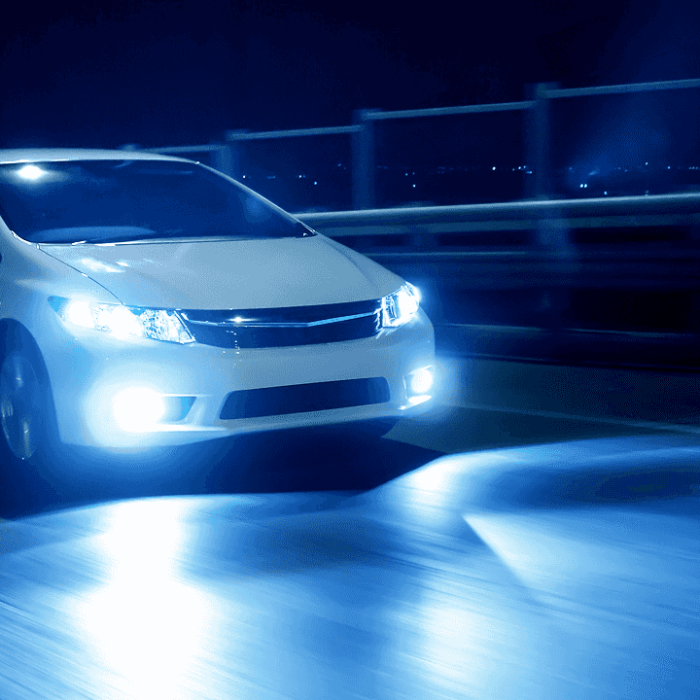If you are going to travel in Sweden with the help of a four-wheeled friend, then you will be interested to know this Scandinavian country’s condition of the road network. In this article we will tell you which roads in Sweden are the busiest, where there are toll sections, what nuances need to be taken into account by an auto traveler, etc.
Features of the road network in Sweden
Almost all roads in Sweden have two or more lanes in one direction, excellent road coverage and lighting. Everything is perfectly marked, signposted; there are plenty of overpasses, bridges, tunnels and interchanges… Although the total length of Swedish roads is almost half a million kilometers. There are so many markers and signs on the roads, that the navigator is practically not required. And the warning about the turn or the traffic camera can be a kilometer or two before the object itself. All Swedish roads are well lit in the dark. In addition, they are very comfortable and almost always empty – the Swedes do not buy two or three cars per family, they are used to living modestly, despite the high standard of living. So not everyone will be able to see the traffic jam in Sweden.
There are many motels along federal highways, but there are enough free parking areas for the night with nice complexes, included a shower and a toilet, outlets for recharging gadgets, tables with benches in the fresh air. There is an irreproachable cleanliness everywhere.
There is a roadbed of impeccable quality even on third-rate country roads. Markers of three colors – green (track number), blue (names of localities and distance to them) and yellow (the speed limit or distance to the object). In some areas you can drive a few dozen kilometers and not meet a single car, as well as police. At the same time the driver is always warned about traffic cameras (which are enough on Swedish roads).
There are a lot of Volvo cars in Sweden. As a rule – quite modern, 2000’s: S60 and S80 of both generations, the entire line of crossovers, C30 little guys… There are expectedly more practical and respectable V70 business estate cars than in Russia. Saab in his native Sweden is already almost a “disappeared nature.”
In Stockholm, the capital of Sweden, many roads are constantly being repaired. Therefore, for a driving in Stockholm, there is an urgent need for high-quality paid navigation with a constant Internet access through the local operator’s SIM card. But even it, according to the inhabitants of the Swedish capital, is not aware of sudden closing. At the same time, Swedish drivers are self-possession champions. No “beep, beep” or waving their hands. They even won’t hang out the window. They will calmly stand at the traffic lights and wait if someone is confused with the navigation.
Paid and free road sections
Sweden does not have toll motorways. But some parts of the road network are still paid by drivers. This applies to some bridges.
In particular, there is the Svinesund bridge on the border between Sweden and Norway. Until 2015, driving on the bridge is paid for any car and truck (it’s not about motorcycles and mopeds). And you can’t pay in cash, because standing on the bridge (length 704 m) is prohibited. The bridge is a part of the Oslo-Gothenburg motorway.

Driving on the Öresund bridge is also paid. It is built across the strait of Øresund and connects the capital of Denmark, Copenhagen, with Swedish city of Malmö. The Öresund bridge has a length of 7.845 km. There is a four-lane traffic on the bridge. Driving on it is paid by everyone, including motorcyclists. At the entrance to the payment station, strips of different colors are marked on the bridge. For cash payment, you should choose the yellow strip, for card payment (Visa, Visa Electron, Maestro, MasterCard, EuroCard, American Express, Diners Club, Dankort, Bankkort (Sparbanken), JCB, Rikskort and petrol cards from Shell, Statoil, OK/Q8, Q8, YX Energi, Uno-X Energi, Metax, Routex, DKV, UTA) – the blue one. The green strip is only for BroBizz® customers. You can pay for passage by both Danish and Swedish kronas, as well as the euro. But you won’t be given the change in euros (only in kronas).
At the end of 2014, the Sundsvalls bridge with a length of 2,109 km was opened. It is built through Sundsvall Bay and has four lanes. Driving by motorcycles and mopeds is not paid. At the entrance to the bridge, the crossing of the control point is recorded (license plates are read), the payment receipt is sent to the postal address of the vehicle owner.
A year before the opening of the Sundsvalls bridge, the Motala bridge was built. It was laid across the strait between the lakes of Vettern and Buren. The Motala Bridge has a length of 620 m and four lanes. Driving by motorcycles and mopeds, as well as on the Sundsvalls bridge, is not paid.
All other road sections in Sweden are free, but there is a tax on congestion. Let’s look into it more closely.
What is it the Swedish tax on congestion?
The capital of Sweden, Stockholm, is overrun with cars, like the city of Gothenburg. That’s why it was decided to charge a certain amount of money from every, even a foreign, car, passing along the roads of these two cities. There are no check points to pay this amount. A video recording of the vehicle registration number is enough, and then the car is identified, and a ticket for payment is sent to the car’s owner. It contains information on the number of trips through the checkpoint and their cost per day during the previous calendar month. This amount should be credited to the bank account of the Swedish Transport Agency, intended for the tax on congestion payment, not later than the day specified in the ticket.
The tax on congestion is levied on cars and trucks, as well as on buses weighing less than 14 tons. Motorcycles and mopeds are exempt from paying this tax. The amount of payment depends on the day of the week and time of day. Tax is levied on vehicles that cross the checkpoint from Monday to Friday from 06.00 to 18.29. Tax is not charged on Saturdays, Sundays, holidays, as well as on the eve of holidays or in July.
In Stockholm, a special payment rule is applied for the Lidingö district. The tax on congestion is not collected from vehicles crossing two different checkpoints within 30 minutes. Provided that one of them is on the Gasverksvegen, Lidingevegen or Norra Hamnvegen roads. The system of payment for entry into the center of Stockholm is convenient. You create an account on the site, enter the car number and bank card number… The money for each entry is automatically written off.
In Gothenburg, a one-time payment rule applies, which means that a car crossing several checkpoints within 60 minutes is taxed only once. The payable amount is equal to the maximum fare price.

So, Sweden is a very convenient country for a motorist. But everyone who gets behind the wheel must have a document confirming the right to drive on Swedish roads. International driving license is recognized by Sweden, and if you still don’t have it, it’s not big deal. You can apply for international driving license in half an hour right here on this site.

Published September 17, 2018 • 6m to read






